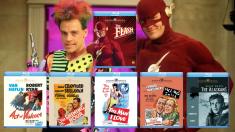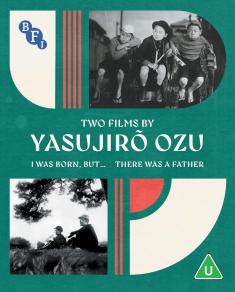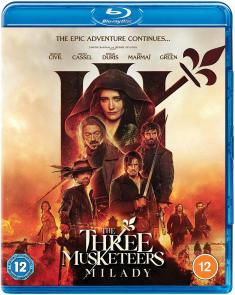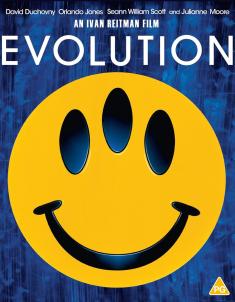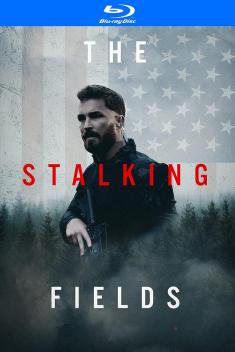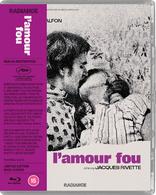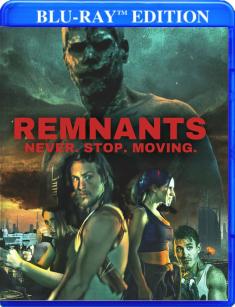How Green Was My Valley
Overview -Produced by the legendary Darryl F. Zanuck, How Green Was My Valley is a winner of five Academy Awards, including Best Picture, Best Director, and Best Cinematography (Arthur C. Miller). Director John Ford's classic tale of a childhood spent in a turn-of-the-century Welsh mining village. Focusing on one family and their six sons, the action is seen through the eyes of young Huw (McDowall), and charts the everyday struggles of the local community.
Storyline: Our Reviewer's Take
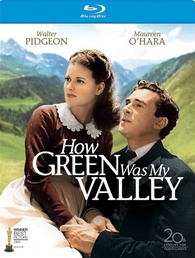
It was released the same year as arguably the greatest movie ever made, but on Oscar night 1941, 'How Green Was My Valley' took home the Best Picture Academy Award, beating 'Citizen Kane,' and John Ford won his third Best Director prize, edging out boy wonder Orson Welles. Today, it's tough not to shake one's head in disbelief and bemoan another glaring Oscar oversight, but strangely enough, at the time, no one considered either victory an upset. With warmth, sensitivity, and the kind of salt-of-the-earth spirit that sways Academy voters, 'How Green Was My Valley' won the hearts of an America on the brink of war, while the cynical 'Kane' rankled the establishment with its controversial viewpoints, conceited air, and brash technique. Yet anyone who dismisses 'How Green Was My Valley' as mainstream mush for the masses hasn't fully examined this beautifully made motion picture, which scores big points on emotional, technical, and artistic levels as it eloquently examines the lives and loves of a crusty coal-mining clan in a small Welsh village around the turn of the 20th century.
Based on Richard Llewellyn's best-selling and supremely lyrical novel, 'How Green Was My Valley' chronicles not just the triumphs, tragedies, and mundane events that befall a single family, it also paints an affecting portrait of a bygone era and brutal way of life that binds together and rips asunder those who live and breathe it. Impeccably directed by Ford, this heartwarming, often humorous, and intensely romantic movie captures the unique mining environment and the socio-economic influences and pressures that shape and mold it. Straightforward in style, yet accented by a poetic timbre that tempers the setting's grit and grime, 'How Green Was My Valley' garners attention for its graceful tone and simple messages, both of which have affected generations of audiences.
The Morgans are a hearty lot - hale, cheerful, and blessed with vigorous genes, a good work ethic, and strength of character. The soft-spoken father (Donald Crisp) and protective matriarch (Sara Allgood) have raised their six children well, but they're no match for the ruthless greed and pig-headed whims of the local coal company that enslaves their brood, nor can they always skirt the dangers that greet them daily when they descend into the cavernous underworld. Seen through the eyes of the youngest son, the pre-adolescent Huw (Roddy McDowell), the story of 'How Green Was My Valley' follows an episodic pattern. Son Ivor (Patric Knowles) marries the fresh-faced Bronwyn (Anna Lee), while daughter Angharod (Maureen O'Hara) and the town preacher, Mr. Gruffydd (Walter Pidgeon), begin a tentative and frustrating relationship. A miner's strike tests the Morgans' resolve, and Huw and his mother must endure months of rehabilitation after a freak accident. As Huw grows up, he confronts the challenges of school and, along with his parents, watches his siblings spread their wings, fly the coop, and deal with their own difficult issues.
Universal themes and an enticing air of nostalgia permeate 'How Green Was My Valley,' making it easy to identify with the characters and their respective plights. Yet unfortunately, much like the 1939 version of 'Wuthering Heights,' the film only covers a portion of the book. As the movie opens, an unseen 50-year-old Huw prepares to reluctantly leave the valley where he has spent his entire existence, but on screen he only ages to about 15. We never witness Huw as a man, never see how his relationship with Bronwyn develops, and never understand what forces conspire to ultimately drive him from his beloved home. Such omissions don't make the film any less fulfilling, but they do leave us with the nagging sense that the Morgans' entire story hasn't been told.
Ford's accessible style, however, punctuated by a host of lovely images that convey as much emotion as the most heartfelt line readings, make it easy to forgive that particular shortcoming. His composition is flawless - several shots would make marvelous still photographs - and few films possess as many telling close-ups or transmit as much information without the aid of dialogue. Ford is often perceived as a workmanlike director, but his understated artistry outshines showier craftsmen. And all of his gifts are on display here. With a deft touch, he unites the film's high-quality production values with the excellent performances of his actors, all of whom bring out the subtle nuances that distinguish Philip Dunne's Oscar-nominated adaptation.
Crisp won a well-deserved Best Supporting Actor award for his stoic yet tender portrayal of the patient father, and Allgood, who received a Best Supporting Actress nod, is equally fine as his tough, long-suffering wife who weathers more than her share of hardship and loss. Both O'Hara and Lee, photographed lovingly by Ford, bring welcome softness to this male-dominated tale, but without the exceptional work of the young McDowell in his film debut, 'How Green Was My Valley' would be a far different motion picture. McDowell, outclassing the likes of Freddie Bartholomew, Jackie Cooper, Margaret O'Brien, and Shirley Temple, gives one of the all-time great juvenile performances as the wide-eyed Huw, combining wonder and determination with wistful melancholy and an admirable inner strength. Mature beyond his years and cute beyond measure, he fashions a full-bodied portrayal that anchors the movie, propels it forward, and makes it resonate.
'Citizen Kane' screams artistry; 'How Green Was My Valley' whispers it. Yet Ford's classic family drama brandishes a heart big enough to swallow Welles' masterpiece whole. It's not a better film, and it hasn't aged as well, but it's worthy of all the accolades heaped upon it. And it continues to warm and nourish us almost three-quarters of a century after it first won not just Oscars, but more importantly, our enduring affection.
The Blu-ray: Vital Disc Stats
'How Green Was My Valley' arrives on Blu-ray packaged in a standard case. The 50GB dual-layer disc houses a 1080p/AVC MPEG-4 transfer and newly remastered DTS-HD Master Audio 5.1 soundtrack. Once the disc is inserted into the player, the static menu with music immediately pops up; no promos or previews precede it.
Video Review
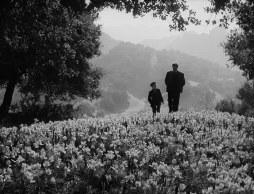
As breathtaking as the Welsh countryside it depicts (even though the film was entirely shot in Malibu, California), the 1080p/AVC MPEG-4 transfer of 'How Green Was My Valley' is a sight to behold. Antiseptically clean, with nary a nick, mark, or scratch in view, the image possesses astounding clarity and depth, and a lushness that's rare in black-and-white photography. Cinematographer Arthur C. Miller, who won an Academy Award for his work here, takes great care to capture both the grit of the coal mines and pastoral beauty of the surrounding hills and glens, and both are equally well rendered, as exceptional gray scale variance enhances detail and immerses us in the bucolic atmosphere. Individual blooms are visible in a field of daffodils, textures of wool jackets and trousers are distinct, and the Oscar-winning interior design is showcased to its full advantage.
A fine grain structure maintains the film's integrity, but there's a natural smoothness to the image that belies its advanced age. Black levels, especially in the cavernous coal mine, are appropriately rich and deep, and shadow delineation is quite good. Even in the darkest scenes, no incidents of crush and no noise could be detected. Close-ups are uniformly lovely, whether they showcase the fresh-faced glow of O'Hara and Lee or the careworn pensiveness of Allgood, and their impact resonates long after the film has ended.
'How Green Was My Valley' is a special motion picture, and Fox has done this Oscar winner proud with a superior transfer that, in addition to thrilling classics aficionados, reminds us a film of almost any age can look spectacular in high definition when treated with the proper care.
Audio Review
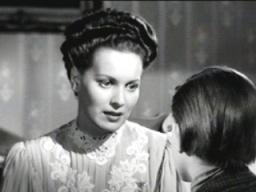
A new DTS-HD Master Audio 5.1 track graces this 72-year-old classic, and though the sound is clear and robust, at times it seems to overwhelm the film's intimate nature. Fox has done a commendable job with the upgrade, but the studio wisely also includes the original mono track for those who desire a more traditional presentation. While I don't normally take issue with the fashioning of a new multi-channel mix, a movie of this vintage presents a challenge due to the primitive recording equipment employed at the time. This track largely succeeds, but at times it sounds a bit harsh and artificial, robbing the picture of its warmth.
Alfred Newman's music score enjoys a high degree of fidelity, nicely filling the room with swelling strings, but it lacks the tonal depth one expects. Upper registers occasionally flirt with distortion, yet bass frequencies are strong, and an explosion late in the film produces a hefty rumble. Dialogue is always well prioritized and easy to comprehend, despite some of the thick accents. (McDowell is especially soft-spoken much of the time, but none of his lines are unintelligible.) A faint hiss could be detected during the quietest moments, but the track is generally clean as a whistle, with no pops, crackles, or surface noise disrupting the action.
Both audio options have pros and cons, but the purist in me recommends sticking with the mono track for the most authentic viewing experience.
Special Features

Just a couple of extras adorn the disc, but what's included is of good quality and worth checking out.
- Audio Commentary – Ford biographer Joseph McBride anchors an informative and well-spoken commentary that also features intermittent remarks (recorded separately) from actress Anna Lee. McBride divulges original casting choices included Katharine Hepburn, Greer Garson, Laurence Olivier, and Tyrone Power, and shares recollections from Roddy McDowell and screenwriter Philip Dunne, who apparently didn't like how Ford altered his script. We also learn about Sara Allgood's testy relationship with Ford, and how the director was not pleased with her performance. Lee calls McDowell "my dear love," and talks glowingly about Ford and the family atmosphere that pervaded the set. Lee also remembers how she hid her real-life pregnancy from Ford during filming so she wouldn't lose her role, and how the application of a bit of rouge on her cheeks prompted this admonition from the stern director: "You're playing a Welsh virgin, not a Hollywood hooker!" McBride talks about the social climate depicted on film, how Ford's own childhood travails mirrored some of Huw's experiences, and how Ford was loyal to the actors with whom he worked, especially O'Hara and Lee. McBride's cogent analysis augments our appreciation of the film, and Lee provides welcome warmth and heart.
- Featurette: "Hollywood Backstories: 'How Green Was My Valley'" (SD, 25 minutes) – This 2001 installment of the popular AMC series chronicles the background and production of this beloved classic. Comments from Maureen O'Hara, Anna Lee, and Roddy McDowell highlight this breezy piece that contains many interesting bits of trivia. We learn Ford regarded 'How Green Was My Valley' as his favorite picture and many with whom he worked considered him a "total dictator" on the set. The discovery of McDowell is outlined, as well as producer Darryl F. Zanuck's intense commitment to the project and original intention to shoot the film on location in Wales as a four-hour Technicolor epic. Director Peter Bogdanovich and historian Rudy Behlmer also chime in with their perspective, and both men heartily salute Ford and the film.
- Theatrical Trailer (SD, 2 minutes) – The re-release preview for 'How Green Was My Valley,' touting its multiple Academy Awards, rounds out the disc supplements.
Final Thoughts

'How Green Was My Valley' stands as one of Hollywood's best loved family sagas and a moving portrait of a bygone culture. Excellent direction from the masterful John Ford and superior performances from Roddy McDowell, Donald Crisp, Maureen O'Hara, and Sara Allgood bring to brilliant life this tale of a tight-knit clan bound together and torn apart by the dangers of mining, economic hardship, progress, and disillusionment. Fox takes great care with this multiple Oscar-winner, treating it with the respect it deserves by lavishing upon it a beautiful transfer, lossless multi-channel audio, and a couple of worthwhile supplements. Though a bit dated today, the film retains its heart and soul, and remains a special favorite among classic movie buffs. Recommended.
